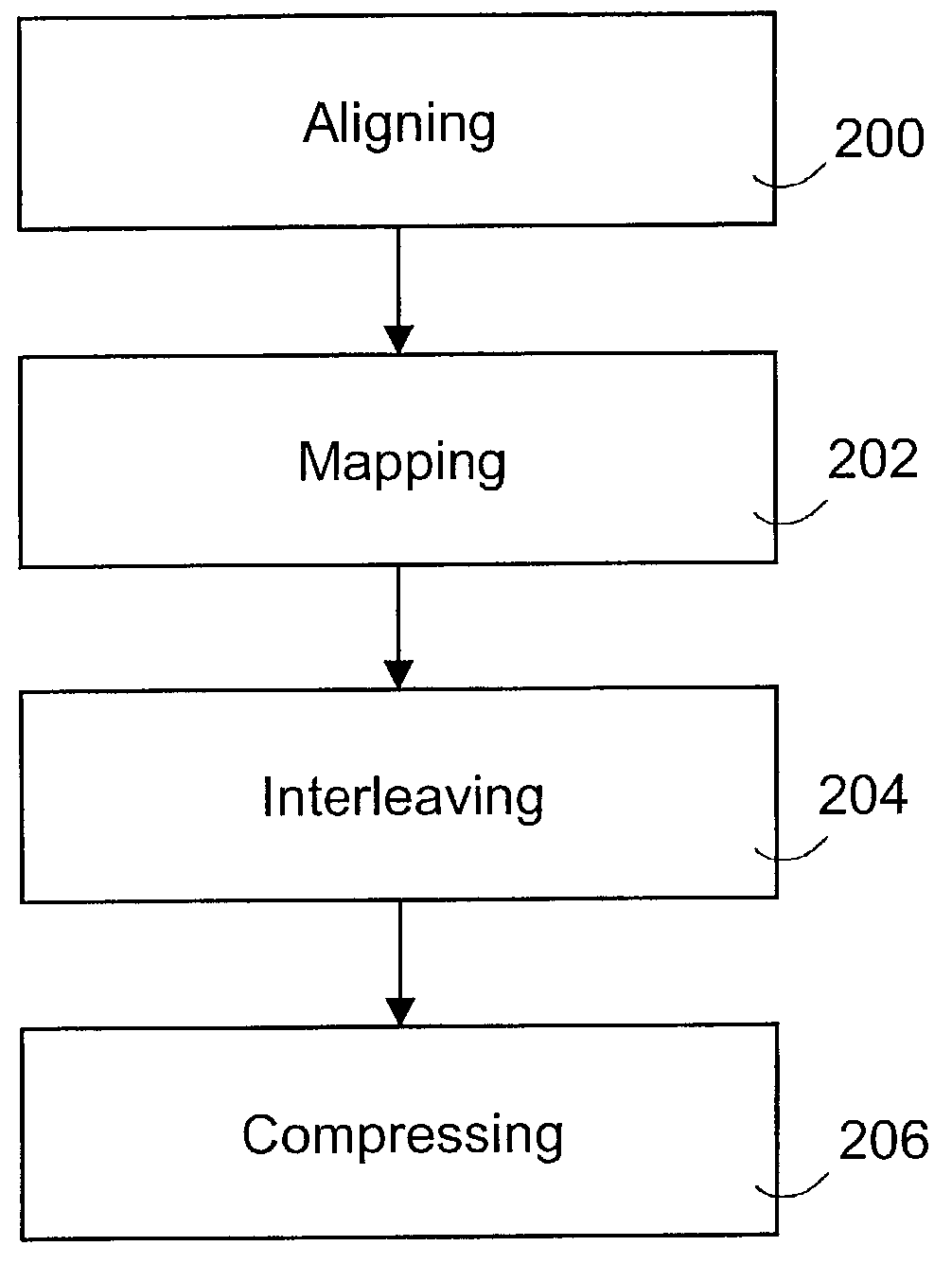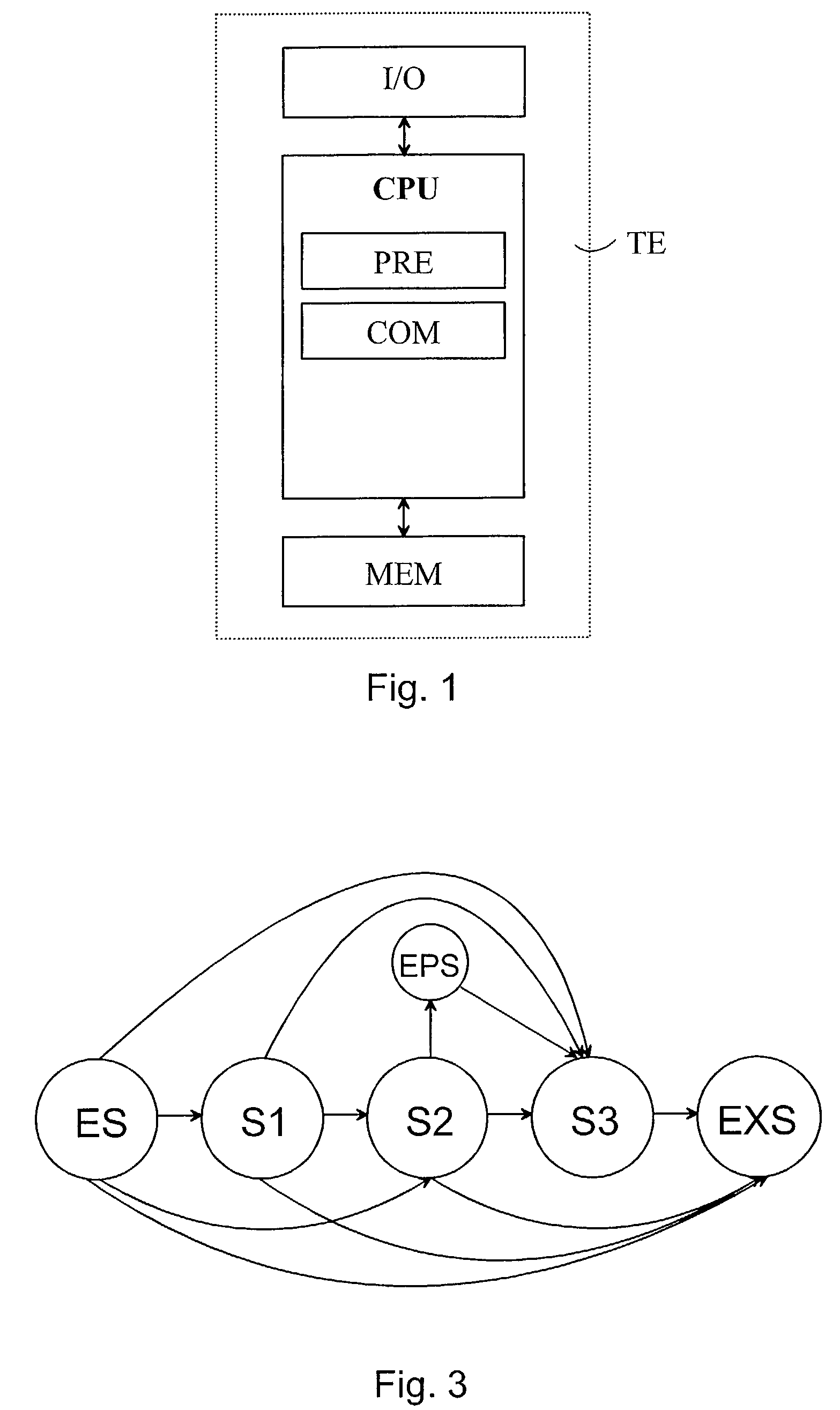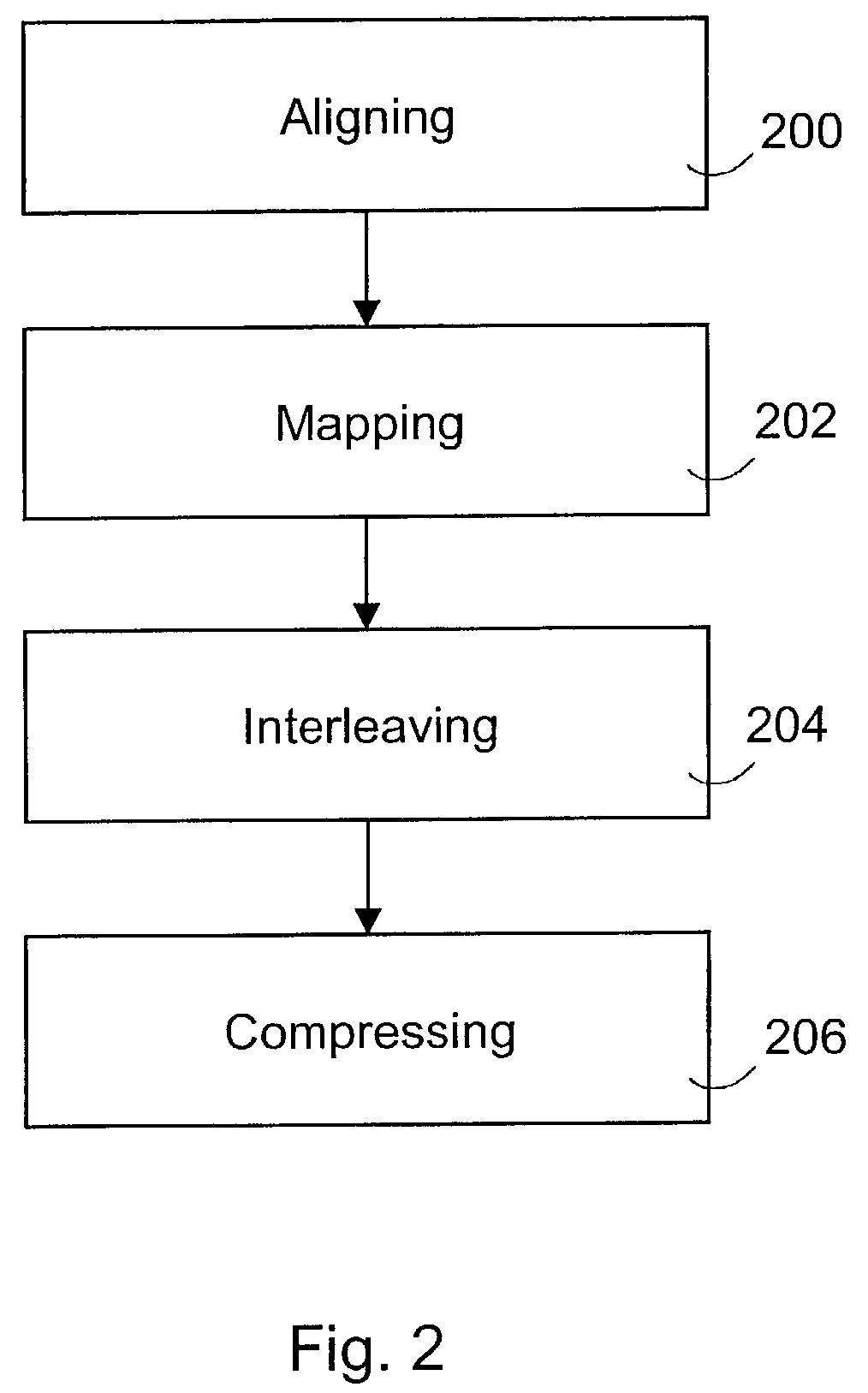Method for compressing dictionary data
a dictionary and data compression technology, applied in the field of speech recognition, can solve the problems of inability to represent pronunciation by general pronunciation rules, inability to correctly inability to properly generate pronunciation of some words, etc., to achieve effective compression, reduce the entropy of the dictionary, and improve the effect of compression
- Summary
- Abstract
- Description
- Claims
- Application Information
AI Technical Summary
Benefits of technology
Problems solved by technology
Method used
Image
Examples
Embodiment Construction
[0022]FIG. 1 illustrates a data processing device (TE) only for the parts relevant to a preferred embodiment of the invention. The data processing device (TE) can be, for example, a personal computer (PC) or a mobile terminal. The data processing unit (TE) comprises I / O means (I / O), a central processing unit (CPU) and memory (MEM). The memory (MEM) comprises a read-only memory ROM portion and a rewriteable portion, such as a random access memory RAM and FLASH memory. The information used to communicate with different external parties, e.g. a CD-rom, other devices and the user, is transmitted through the I / O means (I / O) to / from the central processing unit (CPU). The central processing unit (CPU) provides a pre-processing block (PRE) and a compression block (COM). The functionality of these blocks is typically implemented by executing a software code in a processor, but it can also be implemented with a hardware solution (e.g. an ASIC) or as a combination of these two. The pre-process...
PUM
 Login to View More
Login to View More Abstract
Description
Claims
Application Information
 Login to View More
Login to View More - R&D
- Intellectual Property
- Life Sciences
- Materials
- Tech Scout
- Unparalleled Data Quality
- Higher Quality Content
- 60% Fewer Hallucinations
Browse by: Latest US Patents, China's latest patents, Technical Efficacy Thesaurus, Application Domain, Technology Topic, Popular Technical Reports.
© 2025 PatSnap. All rights reserved.Legal|Privacy policy|Modern Slavery Act Transparency Statement|Sitemap|About US| Contact US: help@patsnap.com



